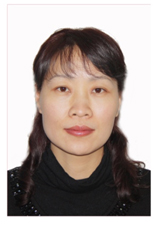Research Progress on Extraction and Species Analysis of Arsenic in Aquatic Organisms

摘 要
综述了水生生物中不同形态砷(包括无机砷、甲基砷、砷甜菜碱、砷胆碱、砷糖、砷脂)的提取方法、分离方法(包括气相色谱法、高效液相色谱法、毛细管电泳法等)和检测方法(包括原子吸收光谱法、原子发射光谱法、原子荧光光谱法、电感耦合等离子体质谱法等)的研究进展,并对其前景进行了简要展望(引用文献74篇)。
 提取
提取  形态分析
形态分析  水生生物
水生生物  综述
综述  arsenic
arsenic  extraction
extraction  species analysis
species analysis  aquatic organism
aquatic organism  review
review 
Abstract
A review on research progress on extraction methods, separation methods (including GC, HPLC, CE and so on) and detection methods (including AAS, AES, AFS, ICP-MS and so on) for arsenic species (including inorganic arsenic, methylarsenic, arsenical betaine, arsenicone, arsenic sugar and arsenic grease) in aquatic organisms was presented. A brief prospect was also given (74 ref. cited).
中图分类号 O65 DOI 10.11973/lhjy-hx202007018
所属栏目 专题报道(环境分析)
基金项目 中央高校基本科研业务费科技平台实验技术人才基金项目(SYSB201811);国家自然科学基金项目(31770548)
收稿日期 2019/10/16
修改稿日期
网络出版日期
作者单位点击查看
备注张金羽,硕士研究生,主要从事微藻砷吸收和转化等研究工作
引用该论文: ZHANG Jinyu,GE Ying,ZHANG Chunhua. Research Progress on Extraction and Species Analysis of Arsenic in Aquatic Organisms[J]. Physical Testing and Chemical Analysis part B:Chemical Analysis, 2020, 56(7): 836~844
张金羽,葛滢,张春华. 水生生物中砷的提取和形态分析的研究进展[J]. 理化检验-化学分册, 2020, 56(7): 836~844
共有人对该论文发表了看法,其中:
人认为该论文很差
人认为该论文较差
人认为该论文一般
人认为该论文较好
人认为该论文很好






参考文献
【1】SMEDLEY P, KINNIBURGH D. A review of the source, behaviour and distribution of arsenic in natural waters[J]. Applied Geochemistry, 2002,17(5):517-568.
【2】WANG Y, WANG S, XU P P, et al. Review of arsenic speciation, toxicity and metabolism in microalgae[J]. Reviews in Environmental Science and Bio, 2015,14(3):427-451.
【3】PÉTURSDÓTTIR Á H, FLETCHER K, GUNNLAUGSDÓTTIR H, et al. Environmental effects on arsenosugars and arsenolipids in Ectocarpus (Phaeophyta)[J]. Environmental Chemistry, 2016,13(1):21-33.
【4】PHILLIPS D J H, DEPLEDGE M H. Metabolic pathways involving arsenic in marine organisms:A unifying hypothesis[J]. Marine Environmental Research, 1985,17(1):1-12.
【5】CAUMETTE G, KOCH I, REIMER K J. Arsenobetaine formation in plankton:A review of studies at the base of the aquatic food chain[J]. Journal of Environmental Monitoring, 2012,14(11):2841-2853.
【6】FRANCESCONI K A, EDMONDS J S. Arsenic and marine organisms[J]. Advances in Inorganic Chemistry, 1996,44:147-189.
【7】REIMER K J, KOCH I, CULLEN W R. Organoarsenicals. Distribution and transformation in the environment[J]. Metal Ions in Life Sciences, 2010,7:165-229.
【8】MIYASHITA S I, MUROTA C, KONDO K, et al. Arsenic metabolism in cyanobacteria[J]. Environmental Chemistry, 2016,13(4):577-589.
【9】SELE V, SLOTH J J, LUNDEBYE A K, et al. Arsenolipids in marine oils and fats:A review of occurrence, chemistry and future research needs[J]. Food Chemistry, 2012,133(3):618-630.
【10】GLABONJAT R A, EHGARTNER J, DUNCAN E G, et al. Arsenolipid biosynthesis by the unicellular alga Dunaliella tertiolecta is influenced by As/P ratio in culture experiments[J]. Metallomics, 2018,10(1):145-153.
【11】FOSTER S, THOMSON D, MAHER W. Uptake and metabolism of arsenate by anexic cultures of the microalgae Dunaliella tertiolecta and Phaeodactylum tricornutum[J]. Marine Chemistry, 2008,108(3/4):172-183.
【12】DUNCAN E G, MAHER W A, FOSTER S D, et al. Influence of culture regime on arsenic cycling by the marine phytoplankton Dunaliella tertiolecta and Thalassiosira pseudonana[J]. Environmental Chemistry, 2013,10(2):91-101.
【13】JANKONG P, CHALHOUB C, KIENZL N, et al. Arsenic accumulation and speciation in freshwater fish living in arsenic-contaminated waters[J]. Environmental Chemistry, 2007,4(1):11-17.
【14】ICHIKAWA S, KAMOSHIDA M, HANAOKA K, et al. Decrease of arsenic in edible brown algae Hijikia fusiforme by the cooking process[J]. Applied Organometallic Chemistry, 2006,20(9):585-590.
【15】SLOTH J J, JULSHAMN K. Survey of total and inorganic arsenic content in blue mussels (mytilus edulis L.) from Norwegian fiords:Revelation of unusual high levels of inorganic arsenic[J]. Journal of Agricultural and Food Chemistry, 2008,56(4):1269-1273.
【16】KARADJOVA I B, SLAVEYKOVA V I, TSALEV D L. The biouptake and toxicity of arsenic species on the green microalga Chlorella Salina in seawater[J]. Aquatic Toxicology, 2008,87(4):264-271.
【17】YE J, RENSING C, ROSEN B P, et al. Arsenic biomethylation by photosynthetic organisms[J]. Trends in Plant Science, 2012,17(3):155-162.
【18】MAEDA S, KUSADOME K, ARIMA H, et al. Biomethylation of arsenic and its excretion by the alga Chlorella vulgaris[J]. Applied Organometallic Chemistry, 1992,6(4):407-413.
【19】SUHENDRAYATNA, OHKI A, KUROIWA T, et al. Arsenic compounds in the freshwater green microalga Chlorella vulgaris after exposure to arsenite[J]. Applied Organometallic Chemistry, 1999,13(2):127-133.
【20】YAMAOKA Y, TAKIMURA O, FUSE H, et al. Effect of glutathione on arsenic accumulation by Dunaliella Salina[J]. Applied Organometallic Chemistry, 1999,13(2):89-94.
【21】YIN X X, CHEN J, QIN J, et al. Biotransformation and volatilization of arsenic by three photosynthetic cyanobacteria[J]. Plant Physiology, 2011,156(3):1631-1638.
【22】FRICKE M W, CREED P A, PARKS A N, et al. Extraction and detection of a new arsine sulfide containing arsenosugar in molluscs by IC-ICP-MS and IC-ESI-MS/MS[J]. Journal of Analytical Atomic Spectrometry, 2004,19(11):1454-1459.
【23】CLELAND B, TSUCHIYA A, KALMAN D A, et al. Arsenic exposure within the Korean community (United States) based on dietary behavior and arsenic levels in hair, urine, air, and water[J]. Environmental Health Perspectives, 2009,117(4):632-638.
【24】MOREDA-PIÑEIRO J, ALONSO-RODRÍGUEZ E, MOREDA-PIÑEIRO A, et al. Simultaneous pressurized enzymatic hydrolysis extraction and clean up for arsenic speciation in seafood samples before high performance liquid chromatography-inductively coupled plasma-mass spectrometry determination[J]. Analytica Chimica Acta, 2010,679(1/2):63-73.
【25】WHALEY-MARTIN K J, KOCH I, MORIARTY M, et al. Arsenic speciation in blue mussels (mytilus edulis) along a highly contaminated arsenic gradient[J]. Environmental Science & Technology, 2012,46(6):3110-3118.
【26】BERGÉS-TIZNADO M E, PÁEZ-OSUNA F, NOTTI A, et al. Arsenic and arsenic species in cultured oyster (crassostrea gigas and C.corteziensis) from coastal lagoons of the SE gulf of California, Mexico[J]. Biological Trace Element Research, 2013,151(1):43-49.
【27】BERGÉS-TIZNADO M E, PÁEZ-OSUNA F, NOTTI A, et al. Biomonitoring of arsenic through mangrove oyster (Crassostrea corteziensis Hertlein, 1951) from coastal lagoons (SE Gulf of California):Occurrence of arsenobetaine and other arseno-compounds[J]. Environmental Monitoring and Assessment, 2013,185(9):7459-7468.
【28】KIRBY J, MAHER W. Tissue accumulation and distribution of arsenic compounds in three marine fish species:Relationship to trophic position[J]. Applied Organometallic Chemistry, 2002,16(2):108-115.
【29】TAKEUCHI M, TERADA A, NANBA K J, et al. Distribution and fate of biologically formed organoarsenicals in coastal marine sediment[J]. Applied Organometallic Chemistry, 2005,19(8):945-951.
【30】THOMSON D, MAHER W, FOSTER S. Arsenic and selected elements in inter-tidal and estuarine marine algae, south-east Coast, NSW, Australia[J]. Applied Organometallic Chemistry, 2007,21(6):396-411.
【31】FOSTER S, MAHER W. Arsenobetaine and thio-arsenic species in marine macroalgae and herbivorous animals:Accumulated through trophic transfer or produced in situ?[J]. Journal of Environmental Sciences, 2016,49:131-139.
【32】HANAOKA K, GOESSLER W, YOSHIDA K, et al. Arsenocholine-and dimethylated arsenic-containing lipids in starspotted shark Mustelus manazo[J]. Applied Organometallic Chemistry, 1999,13(10):765-770.
【33】HANAOKA K, TANAKA Y, NAGATA Y, et al. Water-soluble arsenic residues from several arsenolipids occurring in the tissues of the starspotted shark Musterus manazo[J]. Applied Organometallic Chemistry, 2001,15(4):299-305.
【34】TUKAI R, MAHER W A, MCNAUGHT I J, et al. Occurrence and chemical form of arsenic in marine macroalgae from the east Coast of Australia[J]. Marine and Freshwater Research, 2002,53(6):971-980.
【35】FELDMANN J, KRUPP E M. Critical review or scientific opinion paper:Arsenosugars-a class of benign arsenic species or justification for developing partly speciated arsenic fractionation in foodstuffs?[J]. Analytical and Bioanalytical Chemistry, 2011,399(5):1735-1741.
【36】LI W H, WEI C, ZHANG C, et al. A survey of arsenic species in Chinese seafood[J]. Food and Chemical Toxicology, 2003,41(8):1103-1110.
【37】李卫华,刘玉海.阴/阳离子交换色谱-电感耦合等离子体质谱法分析鱼和贝类海产品砷的形态[J].分析化学, 2011,39(12):1912-1916.
【38】KHOKIATTIWONG S, KORNKANITNAN N, GOESSLER W, et al. Arsenic compounds in tropical marine ecosystems:similarities between mangrove forest and coral reef[J]. Environmental Chemistry, 2009,6(3):226-234.
【39】TEROL A, ARDINI F, GROTTI M, et al. High temperature liquid chromatography-inductively coupled plasma mass spectrometry for the determination of arsenosugars in biological samples[J]. Journal of Chromatography A, 2012,1262:70-76.
【40】SADOLIN E. Investigations into the occurrence of arsenic in organisms of the fish[J]. Biochemische Zeitschrift, 1928,201:323-331.
【41】GARCÍA-SALGADO S, RABER G, RAML R, et al. Arsenosugar phospholipids and arsenic hydrocarbons in two species of brown macroalgae[J]. Environmental Chemistry, 2012,9(1):63-66.
【42】LUNDE G, HANSEN S E, DICH J, et al. The analysis of arsenic in the lipid phase from marine and limnetic algae[J]. Acta Chemica Scandinavica, 1972,26:2642-2644.
【43】RAAB A, NEWCOMBE C, PITTON D, et al. Comprehensive analysis of lipophilic arsenic species in a brown alga (saccharina latissima)[J]. Analytical Chemistry, 2013,85(5):2817-2824.
【44】VASKOVSKY V E, KOROTCHENKO O D, KOSHELEVA L P, et al. Arsenic in the lipid extracts of marine invertebrates[J]. Comparative Biochemistry and Physiology Part B:Comparative Biochemistry, 1972,41(4):777-784.
【45】LISCHKA S, ARROYO-ABAD U, MATTUSCH J, et al. The high diversity of arsenolipids in herring fillet (Clupea harengus)[J]. Talanta, 2013,110:144-152.
【46】RUMPLER A, EDMONDS J S, KATSU M, et al. Arsenic-containing long-chain fatty acids in cod-liver oil:A result of biosynthetic infidelity?[J]. Angewandte Chemie, 2008,47(14):2665-2667.
【47】SELE V, SLOTH J J, HOLMELID B, et al. Arsenic-containing fatty acids and hydrocarbons in marine oils-determination using reversed-phase HPLC-ICP-MS and HPLC-qTOF-MS[J]. Talanta, 2014,121:89-96.
【48】TALESHI M S, JENSEN K B, RABER G, et al. Arsenic-containing hydrocarbons:Natural compounds in oil from the fish capelin, Mallotus villosus[J]. Chemical Communications, 2008,39:4706-4707.
【49】ARROYO-ABAD U, MATTUSCH J, MOTHES S, et al. Detection of arsenic-containing hydrocarbons in canned cod liver tissue[J]. Talanta, 2010,82(1):38-43.
【50】SELE V, AMLUND H, BERNTSSEN M H G, et al. Detection of arsenic-containing hydrocarbons in a range of commercial fish oils by GC-ICPMS analysis[J]. Analytical and Bioanalytical Chemistry, 2013,405(15):5179-5190.
【51】AMAYO K O, RAAB A, KRUPP E M, et al. Novel identification of arsenolipids using chemical derivatizations in conjunction with RP-HPLC-ICPMS/ESMS[J]. Analytical Chemistry, 2013,85(19):9321-9327.
【52】CULLEN W R. Chemical mechanism of arsenic biomethylation[J]. Chemical Research in Toxicology, 2014,27(4):457-461.
【53】MOREDA-PIÑEIRO A, MOREDA-PIÑEIRO J, HERBELLO-HERMELO P, et al. Application of fast ultrasound water-bath assisted enzymatic hydrolysis-high performance liquid chromatography-inductively coupled plasma-mass spectrometry procedures for arsenic speciation in seafood materials[J]. Journal of Chromatography A, 2011,1218(39):6970-6980.
【54】MIYASHITA S I, FUJIWARA S, TSUZUKI M, et al. Cyanobacteria produce arsenosugars[J]. Environmental Chemistry, 2012,9(5):474-484.
【55】MIYASHITA S, FUJIWARA S, TSUZUKI M, et al. Rapid biotransformation of arsenate into oxo-arsenosugars by a freshwater unicellular green alga, chlamydomonas reinhardtii[J]. Bioscience, Biotechnology, and Biochemistry, 2011,75(3):522-530.
【56】MURRAY L A, RAAB A, MARR I L, et al. Biotransformation of arsenate to arsenosugars by Chlorella vulgaris[J]. Applied Organometallic Chemistry, 2003,17(9):669-674.
【57】SANTOS C M M, NUNES M A G, BARBOSA I S, et al. Evaluation of microwave and ultrasound extraction procedures for arsenic speciation in bivalve mollusks by liquid chromatography-inductively coupled plasma-mass spectrometry[J]. Spectrochimica Acta Part B:Atomic Spectroscopy, 2013,86:108-114.
【58】PÉTURSDÓTTIR Á H, GUNNLAUGSDÓTTIR H, KRUPP E M, et al. Inorganic arsenic in seafood:Does the extraction method matter?[J]. Food Chemistry, 2014,150:353-359.
【59】XUE X M, YAN Y, XIONG C, et al. Arsenic biotransformation by a cyanobacterium Nostoc sp.PCC 7120[J]. Environmental Pollution, 2017,228:111-117.
【60】MIYASHITA S, SHIMOYA M, KAMIDATE Y, et al. Rapid determination of arsenic species in freshwater organisms from the arsenic-rich Hayakawa River in Japan using HPLC-ICP-MS[J]. Chemosphere, 2009,75(8):1065-1073.
【61】ZHANG S Y, SUN G X, YIN X X, et al. Biomethylation and volatilization of arsenic by the marine microalgae Ostreococcus tauri[J]. Chemosphere, 2013,93(1):47-53.
【62】JIA Y Y, WANG L, MA L, et al. Speciation analysis of six arsenic species in marketed shellfish:Extraction optimization and health risk assessment[J]. Food Chemistry, 2018,244:311-316.
【63】TALESHI M S, RABER G, EDMONDS J S, et al. Arsenolipids in oil from blue whiting Micromesistius poutassou-evidence for arsenic-containing esters[J]. Scientific Reports, 2015,4:7492-7498.
【64】KHAN M, FRANCESCONI K A. Preliminary studies on the stability of arsenolipids:Implications for sample handling and analysis[J]. Journal of Environmental Sciences, 2016,49:97-103.
【65】王亚,张春华,王淑,等.带菌盐藻对不同形态砷的富集和转化研究[J]. 环境科学, 2013,34(11):4257-4265.
【66】YU X W, XIONG C, JENSEN K B, et al. Mono-acyl arsenosugar phospholipids in the edible brown alga Kombu (Saccharina japonica)[J]. Food Chemistry, 2018,240:817-821.
【67】GLABONJAT R A, RABER G, JENSEN K B, et al. Quantification of arsenolipids in the certified reference material NMIJ 7405-a (hijiki) using HPLC/Mass spectrometry after chemical derivatization[J]. Analytical Chemistry, 2014,86(20):10282-10287.
【68】YANG G D, XU X Q, WANG W, et al. A new interface used to couple capillary electrophoresis with an inductively coupled plasma mass spectrometry for speciation analysis[J]. Electrophoresis, 2010,29(13):2862-2868.
【69】WOLLE M M, CONKLIN S D. Speciation analysis of arsenic in seafood and seaweed:Part Ⅱ-single laboratory validation of method[J]. Analytical and Bioanalytical Chemistry, 2018,410(22):5689-5702.
【70】陈玉红,米健秋,徐陆正,等.毛细管电泳-电感耦合等离子体质谱法联用(CE-ICP/MS)测定八种砷的化合物[J]. 环境化学, 2011,30(7):1374-1377.
【71】李林林,朱英存.联用技术在砷形态分析中的研究进展[J]. 中国环境管理干部学院学报, 2013,23(2):54-57.
【72】XUE X M, YE J, RABER G, et al. Identification of steps in the pathway of arsenosugar biosynthesis[J]. Environmental Science & Technology, 2019,53(2):634-641.
【73】BEAUCHEMIN D. The ICP-MS approach to environmental studies[J]. Mikrochimica Acta, 1989,99:273-281.
【2】WANG Y, WANG S, XU P P, et al. Review of arsenic speciation, toxicity and metabolism in microalgae[J]. Reviews in Environmental Science and Bio, 2015,14(3):427-451.
【3】PÉTURSDÓTTIR Á H, FLETCHER K, GUNNLAUGSDÓTTIR H, et al. Environmental effects on arsenosugars and arsenolipids in Ectocarpus (Phaeophyta)[J]. Environmental Chemistry, 2016,13(1):21-33.
【4】PHILLIPS D J H, DEPLEDGE M H. Metabolic pathways involving arsenic in marine organisms:A unifying hypothesis[J]. Marine Environmental Research, 1985,17(1):1-12.
【5】CAUMETTE G, KOCH I, REIMER K J. Arsenobetaine formation in plankton:A review of studies at the base of the aquatic food chain[J]. Journal of Environmental Monitoring, 2012,14(11):2841-2853.
【6】FRANCESCONI K A, EDMONDS J S. Arsenic and marine organisms[J]. Advances in Inorganic Chemistry, 1996,44:147-189.
【7】REIMER K J, KOCH I, CULLEN W R. Organoarsenicals. Distribution and transformation in the environment[J]. Metal Ions in Life Sciences, 2010,7:165-229.
【8】MIYASHITA S I, MUROTA C, KONDO K, et al. Arsenic metabolism in cyanobacteria[J]. Environmental Chemistry, 2016,13(4):577-589.
【9】SELE V, SLOTH J J, LUNDEBYE A K, et al. Arsenolipids in marine oils and fats:A review of occurrence, chemistry and future research needs[J]. Food Chemistry, 2012,133(3):618-630.
【10】GLABONJAT R A, EHGARTNER J, DUNCAN E G, et al. Arsenolipid biosynthesis by the unicellular alga Dunaliella tertiolecta is influenced by As/P ratio in culture experiments[J]. Metallomics, 2018,10(1):145-153.
【11】FOSTER S, THOMSON D, MAHER W. Uptake and metabolism of arsenate by anexic cultures of the microalgae Dunaliella tertiolecta and Phaeodactylum tricornutum[J]. Marine Chemistry, 2008,108(3/4):172-183.
【12】DUNCAN E G, MAHER W A, FOSTER S D, et al. Influence of culture regime on arsenic cycling by the marine phytoplankton Dunaliella tertiolecta and Thalassiosira pseudonana[J]. Environmental Chemistry, 2013,10(2):91-101.
【13】JANKONG P, CHALHOUB C, KIENZL N, et al. Arsenic accumulation and speciation in freshwater fish living in arsenic-contaminated waters[J]. Environmental Chemistry, 2007,4(1):11-17.
【14】ICHIKAWA S, KAMOSHIDA M, HANAOKA K, et al. Decrease of arsenic in edible brown algae Hijikia fusiforme by the cooking process[J]. Applied Organometallic Chemistry, 2006,20(9):585-590.
【15】SLOTH J J, JULSHAMN K. Survey of total and inorganic arsenic content in blue mussels (mytilus edulis L.) from Norwegian fiords:Revelation of unusual high levels of inorganic arsenic[J]. Journal of Agricultural and Food Chemistry, 2008,56(4):1269-1273.
【16】KARADJOVA I B, SLAVEYKOVA V I, TSALEV D L. The biouptake and toxicity of arsenic species on the green microalga Chlorella Salina in seawater[J]. Aquatic Toxicology, 2008,87(4):264-271.
【17】YE J, RENSING C, ROSEN B P, et al. Arsenic biomethylation by photosynthetic organisms[J]. Trends in Plant Science, 2012,17(3):155-162.
【18】MAEDA S, KUSADOME K, ARIMA H, et al. Biomethylation of arsenic and its excretion by the alga Chlorella vulgaris[J]. Applied Organometallic Chemistry, 1992,6(4):407-413.
【19】SUHENDRAYATNA, OHKI A, KUROIWA T, et al. Arsenic compounds in the freshwater green microalga Chlorella vulgaris after exposure to arsenite[J]. Applied Organometallic Chemistry, 1999,13(2):127-133.
【20】YAMAOKA Y, TAKIMURA O, FUSE H, et al. Effect of glutathione on arsenic accumulation by Dunaliella Salina[J]. Applied Organometallic Chemistry, 1999,13(2):89-94.
【21】YIN X X, CHEN J, QIN J, et al. Biotransformation and volatilization of arsenic by three photosynthetic cyanobacteria[J]. Plant Physiology, 2011,156(3):1631-1638.
【22】FRICKE M W, CREED P A, PARKS A N, et al. Extraction and detection of a new arsine sulfide containing arsenosugar in molluscs by IC-ICP-MS and IC-ESI-MS/MS[J]. Journal of Analytical Atomic Spectrometry, 2004,19(11):1454-1459.
【23】CLELAND B, TSUCHIYA A, KALMAN D A, et al. Arsenic exposure within the Korean community (United States) based on dietary behavior and arsenic levels in hair, urine, air, and water[J]. Environmental Health Perspectives, 2009,117(4):632-638.
【24】MOREDA-PIÑEIRO J, ALONSO-RODRÍGUEZ E, MOREDA-PIÑEIRO A, et al. Simultaneous pressurized enzymatic hydrolysis extraction and clean up for arsenic speciation in seafood samples before high performance liquid chromatography-inductively coupled plasma-mass spectrometry determination[J]. Analytica Chimica Acta, 2010,679(1/2):63-73.
【25】WHALEY-MARTIN K J, KOCH I, MORIARTY M, et al. Arsenic speciation in blue mussels (mytilus edulis) along a highly contaminated arsenic gradient[J]. Environmental Science & Technology, 2012,46(6):3110-3118.
【26】BERGÉS-TIZNADO M E, PÁEZ-OSUNA F, NOTTI A, et al. Arsenic and arsenic species in cultured oyster (crassostrea gigas and C.corteziensis) from coastal lagoons of the SE gulf of California, Mexico[J]. Biological Trace Element Research, 2013,151(1):43-49.
【27】BERGÉS-TIZNADO M E, PÁEZ-OSUNA F, NOTTI A, et al. Biomonitoring of arsenic through mangrove oyster (Crassostrea corteziensis Hertlein, 1951) from coastal lagoons (SE Gulf of California):Occurrence of arsenobetaine and other arseno-compounds[J]. Environmental Monitoring and Assessment, 2013,185(9):7459-7468.
【28】KIRBY J, MAHER W. Tissue accumulation and distribution of arsenic compounds in three marine fish species:Relationship to trophic position[J]. Applied Organometallic Chemistry, 2002,16(2):108-115.
【29】TAKEUCHI M, TERADA A, NANBA K J, et al. Distribution and fate of biologically formed organoarsenicals in coastal marine sediment[J]. Applied Organometallic Chemistry, 2005,19(8):945-951.
【30】THOMSON D, MAHER W, FOSTER S. Arsenic and selected elements in inter-tidal and estuarine marine algae, south-east Coast, NSW, Australia[J]. Applied Organometallic Chemistry, 2007,21(6):396-411.
【31】FOSTER S, MAHER W. Arsenobetaine and thio-arsenic species in marine macroalgae and herbivorous animals:Accumulated through trophic transfer or produced in situ?[J]. Journal of Environmental Sciences, 2016,49:131-139.
【32】HANAOKA K, GOESSLER W, YOSHIDA K, et al. Arsenocholine-and dimethylated arsenic-containing lipids in starspotted shark Mustelus manazo[J]. Applied Organometallic Chemistry, 1999,13(10):765-770.
【33】HANAOKA K, TANAKA Y, NAGATA Y, et al. Water-soluble arsenic residues from several arsenolipids occurring in the tissues of the starspotted shark Musterus manazo[J]. Applied Organometallic Chemistry, 2001,15(4):299-305.
【34】TUKAI R, MAHER W A, MCNAUGHT I J, et al. Occurrence and chemical form of arsenic in marine macroalgae from the east Coast of Australia[J]. Marine and Freshwater Research, 2002,53(6):971-980.
【35】FELDMANN J, KRUPP E M. Critical review or scientific opinion paper:Arsenosugars-a class of benign arsenic species or justification for developing partly speciated arsenic fractionation in foodstuffs?[J]. Analytical and Bioanalytical Chemistry, 2011,399(5):1735-1741.
【36】LI W H, WEI C, ZHANG C, et al. A survey of arsenic species in Chinese seafood[J]. Food and Chemical Toxicology, 2003,41(8):1103-1110.
【37】李卫华,刘玉海.阴/阳离子交换色谱-电感耦合等离子体质谱法分析鱼和贝类海产品砷的形态[J].分析化学, 2011,39(12):1912-1916.
【38】KHOKIATTIWONG S, KORNKANITNAN N, GOESSLER W, et al. Arsenic compounds in tropical marine ecosystems:similarities between mangrove forest and coral reef[J]. Environmental Chemistry, 2009,6(3):226-234.
【39】TEROL A, ARDINI F, GROTTI M, et al. High temperature liquid chromatography-inductively coupled plasma mass spectrometry for the determination of arsenosugars in biological samples[J]. Journal of Chromatography A, 2012,1262:70-76.
【40】SADOLIN E. Investigations into the occurrence of arsenic in organisms of the fish[J]. Biochemische Zeitschrift, 1928,201:323-331.
【41】GARCÍA-SALGADO S, RABER G, RAML R, et al. Arsenosugar phospholipids and arsenic hydrocarbons in two species of brown macroalgae[J]. Environmental Chemistry, 2012,9(1):63-66.
【42】LUNDE G, HANSEN S E, DICH J, et al. The analysis of arsenic in the lipid phase from marine and limnetic algae[J]. Acta Chemica Scandinavica, 1972,26:2642-2644.
【43】RAAB A, NEWCOMBE C, PITTON D, et al. Comprehensive analysis of lipophilic arsenic species in a brown alga (saccharina latissima)[J]. Analytical Chemistry, 2013,85(5):2817-2824.
【44】VASKOVSKY V E, KOROTCHENKO O D, KOSHELEVA L P, et al. Arsenic in the lipid extracts of marine invertebrates[J]. Comparative Biochemistry and Physiology Part B:Comparative Biochemistry, 1972,41(4):777-784.
【45】LISCHKA S, ARROYO-ABAD U, MATTUSCH J, et al. The high diversity of arsenolipids in herring fillet (Clupea harengus)[J]. Talanta, 2013,110:144-152.
【46】RUMPLER A, EDMONDS J S, KATSU M, et al. Arsenic-containing long-chain fatty acids in cod-liver oil:A result of biosynthetic infidelity?[J]. Angewandte Chemie, 2008,47(14):2665-2667.
【47】SELE V, SLOTH J J, HOLMELID B, et al. Arsenic-containing fatty acids and hydrocarbons in marine oils-determination using reversed-phase HPLC-ICP-MS and HPLC-qTOF-MS[J]. Talanta, 2014,121:89-96.
【48】TALESHI M S, JENSEN K B, RABER G, et al. Arsenic-containing hydrocarbons:Natural compounds in oil from the fish capelin, Mallotus villosus[J]. Chemical Communications, 2008,39:4706-4707.
【49】ARROYO-ABAD U, MATTUSCH J, MOTHES S, et al. Detection of arsenic-containing hydrocarbons in canned cod liver tissue[J]. Talanta, 2010,82(1):38-43.
【50】SELE V, AMLUND H, BERNTSSEN M H G, et al. Detection of arsenic-containing hydrocarbons in a range of commercial fish oils by GC-ICPMS analysis[J]. Analytical and Bioanalytical Chemistry, 2013,405(15):5179-5190.
【51】AMAYO K O, RAAB A, KRUPP E M, et al. Novel identification of arsenolipids using chemical derivatizations in conjunction with RP-HPLC-ICPMS/ESMS[J]. Analytical Chemistry, 2013,85(19):9321-9327.
【52】CULLEN W R. Chemical mechanism of arsenic biomethylation[J]. Chemical Research in Toxicology, 2014,27(4):457-461.
【53】MOREDA-PIÑEIRO A, MOREDA-PIÑEIRO J, HERBELLO-HERMELO P, et al. Application of fast ultrasound water-bath assisted enzymatic hydrolysis-high performance liquid chromatography-inductively coupled plasma-mass spectrometry procedures for arsenic speciation in seafood materials[J]. Journal of Chromatography A, 2011,1218(39):6970-6980.
【54】MIYASHITA S I, FUJIWARA S, TSUZUKI M, et al. Cyanobacteria produce arsenosugars[J]. Environmental Chemistry, 2012,9(5):474-484.
【55】MIYASHITA S, FUJIWARA S, TSUZUKI M, et al. Rapid biotransformation of arsenate into oxo-arsenosugars by a freshwater unicellular green alga, chlamydomonas reinhardtii[J]. Bioscience, Biotechnology, and Biochemistry, 2011,75(3):522-530.
【56】MURRAY L A, RAAB A, MARR I L, et al. Biotransformation of arsenate to arsenosugars by Chlorella vulgaris[J]. Applied Organometallic Chemistry, 2003,17(9):669-674.
【57】SANTOS C M M, NUNES M A G, BARBOSA I S, et al. Evaluation of microwave and ultrasound extraction procedures for arsenic speciation in bivalve mollusks by liquid chromatography-inductively coupled plasma-mass spectrometry[J]. Spectrochimica Acta Part B:Atomic Spectroscopy, 2013,86:108-114.
【58】PÉTURSDÓTTIR Á H, GUNNLAUGSDÓTTIR H, KRUPP E M, et al. Inorganic arsenic in seafood:Does the extraction method matter?[J]. Food Chemistry, 2014,150:353-359.
【59】XUE X M, YAN Y, XIONG C, et al. Arsenic biotransformation by a cyanobacterium Nostoc sp.PCC 7120[J]. Environmental Pollution, 2017,228:111-117.
【60】MIYASHITA S, SHIMOYA M, KAMIDATE Y, et al. Rapid determination of arsenic species in freshwater organisms from the arsenic-rich Hayakawa River in Japan using HPLC-ICP-MS[J]. Chemosphere, 2009,75(8):1065-1073.
【61】ZHANG S Y, SUN G X, YIN X X, et al. Biomethylation and volatilization of arsenic by the marine microalgae Ostreococcus tauri[J]. Chemosphere, 2013,93(1):47-53.
【62】JIA Y Y, WANG L, MA L, et al. Speciation analysis of six arsenic species in marketed shellfish:Extraction optimization and health risk assessment[J]. Food Chemistry, 2018,244:311-316.
【63】TALESHI M S, RABER G, EDMONDS J S, et al. Arsenolipids in oil from blue whiting Micromesistius poutassou-evidence for arsenic-containing esters[J]. Scientific Reports, 2015,4:7492-7498.
【64】KHAN M, FRANCESCONI K A. Preliminary studies on the stability of arsenolipids:Implications for sample handling and analysis[J]. Journal of Environmental Sciences, 2016,49:97-103.
【65】王亚,张春华,王淑,等.带菌盐藻对不同形态砷的富集和转化研究[J]. 环境科学, 2013,34(11):4257-4265.
【66】YU X W, XIONG C, JENSEN K B, et al. Mono-acyl arsenosugar phospholipids in the edible brown alga Kombu (Saccharina japonica)[J]. Food Chemistry, 2018,240:817-821.
【67】GLABONJAT R A, RABER G, JENSEN K B, et al. Quantification of arsenolipids in the certified reference material NMIJ 7405-a (hijiki) using HPLC/Mass spectrometry after chemical derivatization[J]. Analytical Chemistry, 2014,86(20):10282-10287.
【68】YANG G D, XU X Q, WANG W, et al. A new interface used to couple capillary electrophoresis with an inductively coupled plasma mass spectrometry for speciation analysis[J]. Electrophoresis, 2010,29(13):2862-2868.
【69】WOLLE M M, CONKLIN S D. Speciation analysis of arsenic in seafood and seaweed:Part Ⅱ-single laboratory validation of method[J]. Analytical and Bioanalytical Chemistry, 2018,410(22):5689-5702.
【70】陈玉红,米健秋,徐陆正,等.毛细管电泳-电感耦合等离子体质谱法联用(CE-ICP/MS)测定八种砷的化合物[J]. 环境化学, 2011,30(7):1374-1377.
【71】李林林,朱英存.联用技术在砷形态分析中的研究进展[J]. 中国环境管理干部学院学报, 2013,23(2):54-57.
【72】XUE X M, YE J, RABER G, et al. Identification of steps in the pathway of arsenosugar biosynthesis[J]. Environmental Science & Technology, 2019,53(2):634-641.
【73】BEAUCHEMIN D. The ICP-MS approach to environmental studies[J]. Mikrochimica Acta, 1989,99:273-281.
相关信息
























